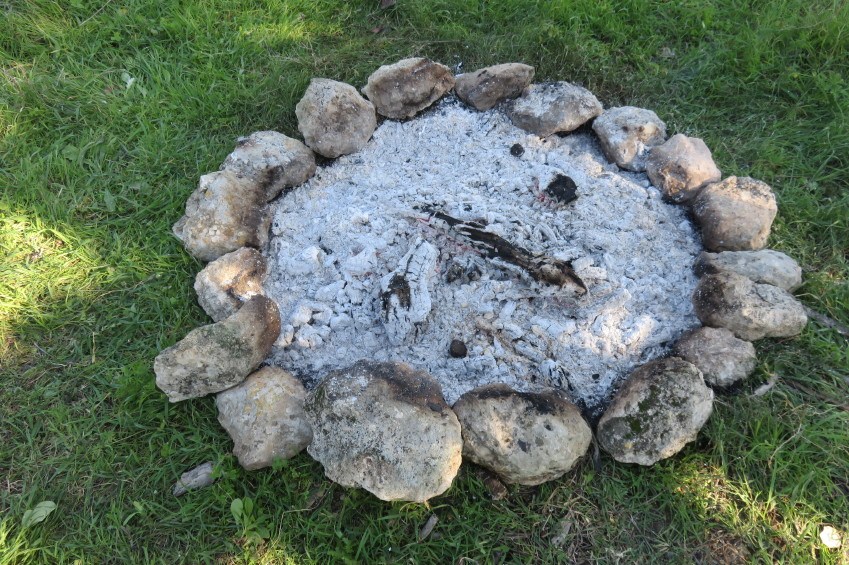
The images of flames engulfing what would normally be a serene forest are devastating to see. Because wildfires are so destructive to the natural environment, releasing millions of tons of carbon dioxide into the atmosphere and with the very real potential to damage property and destroy human lives, often the specter of fire is considered a bad thing, all-round.
A century of rigorous fire suppression practices has helped to create those large blazes we see on television because of a build-up of fuels like dead trees, leaves, and shrubs that would have been cleared if natural wildfires had been permitted to run their course. The fires currently blazing in California, Oregon, Washington, and other states have no beneficial effect on the environment due to their enormous size.
But wildfires, like all things in nature, have an ecological purpose and are part of a grander scheme. While as many as 90% of fires in the United States are caused by human activity, the remaining 10% are sparked by lightning or lava.
Naturally-occurring fires are a necessary catalyst for change: they clear dead vegetation while making way for new growth; they improve the habitat of wildlife by altering the landscape, which has the effect of increasing food quality and abundance; they foster biodiversity by encouraging plants and animals to adapt to fire; they remove invasive foreign plants which allows native species to thrive; and, last but certainly not least, they produce ashes that contain essential elements that will aid in the regeneration of the forest.
What is Wood Ash?
Wood ash is primarily composed of calcium, potassium, phosphorus, and magnesium, but also contains trace amounts of iron, manganese, sodium, boron, zinc, copper, and molybdenum. Because it’s created through the combustion of plant materials, it holds many of the elements needed to support new growth and has long been used by gardeners and farmers as a natural soil amendment. If wood ash was packaged and marketed at garden supply stores, it would have an N-P-K value of 0-1-3.
Beyond enriching the earth, wood ash has many other uses in and around the home. Before you begin using wood ashes, though, there are a few things that you should bear in mind:
- Only use ashes from wood that is free of chemicals. No pressure-treated wood, painted or stained wood, charcoal, briquettes, or commercial products like slow-burning wood logs.
- For best results, ashes obtained from hardwoods like oak and maple have five times as many nutrients per cord as softwoods.
- Although ashes may feel cool to the touch, buried embers can remain hot for days – or even weeks. To safely store wood ash, place them in a metal container with a lid (perhaps invest in this wood ash container with shovel) and set it on a non-combustible surface such as dirt or concrete. Make sure the container is isolated and at least a few feet away from any flammable materials.
- When handling wood ash, always wear gloves, eye protection, and if the particles are especially fine, a dust mask. It is recommended that you use the same precautions with wood ash as you would handling bleach, another highly alkaline substance.
- Never combine wood ash with nitrogen fertilizers such as urea; doing so will produce ammonia gas.
- Don’t use wood ash on seedlings. Wood ash contains salts which will damage young plants.
1. Neutralize Acidic Soil
Unless you are growing acid-loving plants like blueberries, peppers, and azaleas, you will want to maintain a soil pH of between 6 to 7.5 in your garden beds. This range is considered ideal because nutrients in fertilizers will be readily dissolved in water and better absorbed by the plant’s roots.
Acidic soil (a pH below 6) means plants won’t receive enough nitrogen, phosphorus, or potassium; alkaline soil (a pH above 7.5) means plants won’t receive adequate doses of iron, manganese, and phosphorus. Before amending your soil, a soil pH testing kit can be purchased inexpensively here and will give you an accurate reading of your soil’s acidity / alkaline levels.
Wood ash contains up to 70% calcium carbonate and can be used as a substitute for lime. Unlike agricultural limestone, which is slow-acting, wood ash works its magic quickly due to its small particle size. As a general rule, never exceed 25 pounds of wood ash per 1,000 square feet of soil and always re-test your soil after applying wood ash.
2. Deter Slugs & Snails
In the garden, slugs and snails can wreak havoc on your plants in short order. Under the cover of darkness, they can consume whole swaths of your garden patch, with a preference for tender young plants which they gobble up faster than seedlings can grow.
As a natural deterrent, wood ash sprinkled evenly around individual plants or along the perimeter of the entire plot has a desiccant effect – a major turn off for creatures that operate in slime. When applying wood ash, try to avoid direct contact with your plants and be sure to reapply after each rainfall.
3. Add it to Your Compost Pile
Wood ash added to your compost will help boost the heap’s potassium levels, a key nutrient for flowering and fruiting. But including wood ash in the compost should be done in moderation – at a rate of every six inches of compost pile – because wood ash is alkaline. Too much of the stuff will raise the pH value of your compost pile, which in turn will damage your plants (especially the acid-loving ones) when it is applied to the garden as finished compost.
4. Use it on Calcium-Loving Plants
Although crushed eggshells are an excellent source of calcium in the garden, wood ash is another natural substance that contains goodly amounts of calcium carbonate. Sprinkle wood ash sparingly and work into the soil around calcium-lovers like apple trees, carrots, tomatoes, potatoes, cauliflower, broccoli, lettuce, brussels sprouts, cabbage, and celery.
5. Make Ash Tea
Just as compost tea is an awesome organic, all-purpose fertilizer, ash tea can likewise be brewed to prevent or correct potassium deficiencies. Brown spots, curling leaf tips, yellowing between leaf veins, slower plant growth, and reduced crop yield are some of the telltale signs your plants are not receiving enough potassium. And some plants, like tomatoes, potatoes, apples, raspberries, currants, and sugar beets are much more prone to deficiencies.
To make tea from wood ash, place five pounds of ash in a cloth bag (like an old pillowcase) and tie it closed. Place the ash bag in a 50-gallon garbage bin filled with water and allow it to steep for several days. Once the ash tea has brewed, pour about a cup’s worth around your plants weekly.
6. Fertilize Your Lawn
A light dusting of wood ash on the lawn can help promote greener pastures. After applying ashes to your yard, water it well to prevent the beneficial nutrients from blowing away.
7. Make a Dust Bath for Backyard Chickens
Like many birds, chickens need to bathe in dust to keep themselves clean. Wriggling and writhing around in the dirt is a social behavior that allows hens to clean their feathers and skin while also removing parasites like lice and mites. If you’re interested in raising backyard chickens, don’t forget to include this hygienic ritual in your planning process. Mixed with sand, wood ash makes a wonderful dust bath substratum that your chickens will love.
8. Make Soap
The first soaps were made by the ancient Babylonians around 2800 B.C. and utilized a mixture of animal fats and wood ash. When ashes from hardwoods are boiled in soft water, it creates lye. When lye (potassium hydroxide) is mixed with animal fats or vegetable oils, it renders a soft soap. Add a little salt to the mix when pouring the molds to make firmer bars of soap. To learn more about this process, see this wood ash soap making guide.
Recommended Reading: 10 Amazing Homemade Soap Recipes
9. Melt Ice & Snow
The widespread use of rock salt (sodium chloride) to melt ice and snow during winter squalls has resulted in some serious pollution: each year, it is estimated that more than 22 million tons of rock salt are dumped on U.S. roads, eventually travelling to surface and subterranean waterways. While rock salt is somewhat effective in reducing vehicle accidents, it also increases the salinity of fresh bodies of water and is extremely toxic to plants and animals.
One safe and natural alternative to create traction, de-ice, and melt snow is wood ashes. Because wood ash contains potash – or potassium carbonate – a type of salt that is much more eco-friendly than chloride-based salts, it can help break up ice and melt snow when scattered on driveways and walkways. Unlike rock salt, it won’t corrode surfaces like concrete and metal, harm the paws of your four-legged friends, or damage your plants come spring.
10. Polish Silver, Metal, and Glass
Wood ash is mildly abrasive and can be used to polish tarnished silverware, dull metals, and cloudy glass. Take one cup of ashes and add a titch of water to make a thick paste. Don some rubber gloves and spread this paste all over your lusterless items. Let the mixture sit for a few minutes before wiping with a clean cloth. Use a little elbow grease to buff and shine.
11. Absorb Odors
Like baking soda, wood ash is alkaline and can absorb and neutralize bad smells. Try placing some wood ash in a small bowl and leaving it in the fridge or a stinky room, but be sure to replace it with new ashes after a few days.
12. Remove Oil Stains in the Garage and Driveway
Since wood ash is a desiccant, it can be used to clean up grease spills and remove stains from porous surfaces like stone, cement, and asphalt. Sprinkle some ashes on the stain and allow it to settle for a few minutes. Then, sweep it all up with a broom.
Pin This To Save For Later

